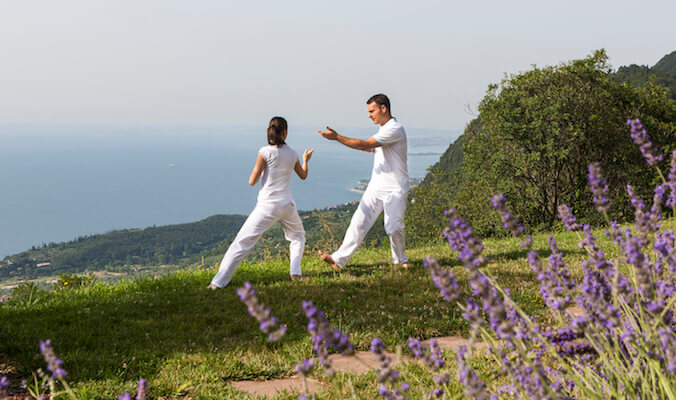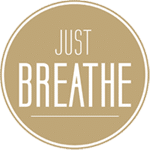All You Need to Know About Tai Chi Practice

© Lefay Resort & Spa, Italy
Loosely translated as “Supreme Ultimate Boxing”. But from its gentle movements, most people would assume that Tai Chi or Tai Chi Chuan is anything but lethal. This popular Chinese internal martial arts discipline emphasizes deep breathing and relaxation. It entails slow, repetitive movements different from muscle contractions found in ‘hard’ martial arts disciplines.
But even if it doesn’t appear as aggressive, Tai Chi offers powerful self-defense techniques. Besides this, people often call it also a ‘healing’ martial arts that, when practiced regularly, comes with an abundance of benefits.
THE HISTORY OF TAI CHI
Though its exact history is unknown, the origin of Tai Chi dates back to the 12th or 13th century in China. The original purpose was a self-defense discipline that simultaneously promotes inner peace. It also has a close connection with Qigong, an ancient Chinese martial arts, that has roots in Traditional Chinese Medicine.
Fast forward to today, it remains one of the most popular martial arts styles in China. Usually, people perform in groups, in the morning in parks and open spaces, over the past decades. Its practice has steadily increased outside of its country of origin – including in western countries such as the U.S.
THE PHILOSOPHY BEHIND TAI CHI
Keeping the balance of the Yin and Yang. Yin and Yang, the opposing elements that make up the universe, need to be in harmony. A belief says that Yin has the qualities of water such as stillness, inward and downward directions and is feminine in character.
In contrast, Yang tends to be masculine and has qualities of fire, such as heat, and includes upward and downward movements. In Taoism, it is believed that in order for one to be healthy, their Yin and Yang needs to be in balance. This can be achieved through the practice of Tai Chi.
TYPES OF TAI CHI PRACTICE
The differences between the five main styles lie in the speed of the movements and the way the body holds postures. Although they are different, these five Tai Chi styles are similar and connected to each other. Hence, it is common for Tai Chi practitioners to combine two or more styles.
- Yang Style: The most popular style out of the bunch. People around the globe practice the Yang style. If you happen to stumble upon a group of Tai Chi practitioners in your neighborhood park, chances are, they are performing Yang Style movements. Yang Luchan developed this style that emphasizes slow, even, gentle and large movements.
- Chen Style: The oldest and the ‘parent’ of the five Tai Chi styles. It alternates between fast and slow movements combined together with some jumping and stomping.
- Wu/Hao Style: Also referred to as ‘The 1st Wu style’, it is the result of the combination of Yang and Chen styles. The movements include smaller frames with slow, smooth movements and a high posture.
- Wu Style: Dubbed as the ‘The 2nd Wu style’, it is the second most popular style practiced today. The defining differences of this style are in its hand form, pushing hands and weapons trainings.
- Sun Style: This style focuses on smooth, flowing movements. Furthermore, it excludes the more rigorous physical movements found in the other four styles, such as crouching and leaping. Due to its extra gentleness, it is most suitable for physical therapy.
WHO SHOULD PRACTICE TAI CHI?
This low impact, ‘soft’ martial arts style is very practical as it requires no equipment and can be done just about anywhere.
As it doesn’t put much pressure on bones and joints, the elderly also practice it to stay physically active. Since it offers a range of health benefits, hospitals and rehabilitation centers offer it to those who are recovering from illness or functional limitations.
That said, Tai Chi practice is also highly beneficial for people of all ages who are still in good health and seeking to maintain their health and fitness. Additionally, it is recommended for those who wish to learn powerful self-defense moves in a non-strenuous (you are encouraged to learn at your own pace). But also prefer to learn it in a safe way (minimal risk of injury).
Tai Chi may also complement existing martial arts practice as it allows you to relax, regenerate and increase focus. It emphasizes the use of internal energy and slow yet powerful movements. It also enables those who master it to deflect their attacker effortlessly. Tai Chi movements often ‘fool’ people due to their subtlety. But as a warning, when performed correctly, they are certainly lethal enough to neutralize opponents without the need of exerting much energy.
HEALTH & FITNESS BENEFITS
In addition to balancing the Yin and Yang, Tai Chi also encourages the proper flow Qi or ‘Chi’. This is an energy force that flows through the body. This energy force has been proven to have numerous health and fitness related benefits including:
- It develops muscle strength. Similar to resistance exercises, when practiced regularly, it can help to develop both lower-body and upper-body strength. As muscles are responsible for pumping fluid and blood throughout the body, the stronger they are, the better the functions of our body’s organs and joints become. Muscle developments can also help reduce chronic pain resulting from Osteoarthritis.
- It increases physical balance. Findings from a 2012 National Center for Biotechnology Information study of over 150 individuals older than 65 who had already sustained injuries as a result of a fall, illustrated that in comparison to traditional physiotherapy, Tai Chi was more effective in preventing future falls. This is because Tai Chi trains balance and proprioception, which has a tendency to deteriorate with age.
- It improves flexibility and posture. Though its movements are far less demanding than many poses found in yoga, evidence shows that Tai Chi helps with flexibility and posture of practitioners of all ages. Being more flexible can assist us to be more active as it improves our range of motions and movements.
- It enhances Cardiovascular fitness. In 2011, The National Center for Complementary and Integrative Health reported that Tai Chi shows promise as a complementary to standard medical care for those who experienced chronic heart failure. Whereas an Emory University study from 1996 using over 100 post-heart attack patients revealed also positive results. It showed that those who participated in Tai Chi classes had better Cardiovascular fitness and lower blood pressure than those who did not.
OTHER BENEFITS
Are the health benefits of Tai Chi practice that we listed above not enough to convince you to start practicing Tai Chi? Here are other great reasons that may just help change your mind:
- People also often refer to it as a moving meditation, Tai Chi is one of the most powerful mind and body exercises. Since it requires focus and self-awareness, it can be effective in reducing stress. Furthermore, a BioMed Central 2010 report found that the regular practice of Tai Chi improves psychological well-being. This is because it reduces anxiety and depression and helps to increase self-esteem.
- Similar to yoga, Tai Chi may encourage spiritual growth, even if it isn’t a goal you intend to achieve when starting your practice. Its inward focus and cultivation of mindfulness helps to establish a connection with the world, especially when practiced in nature.
- Mitch Williams, a Tai Chi instructor living in Canton, Illinois, U.S and the blogger behind Mitch Inspires blog, shared that Tai Chi has vastly improved his skill levels in Judo and performing sleight of hand magic. It has helped him to train for heightened sensitivity and responsiveness to subtle movements. In addition, it also has helped him to shift of weight that is crucial in attaining advanced fighting skills. Additionally, he admitted that, at times, his practice has been the source of tremendous inspiration and creative and artistic breakthroughs.
How to Get Started
Though Tai Chi is one of the safest forms of martial arts and physical exercise. It is best to consult with your doctor before starting your practice. It may not be suitable for those who have musculoskeletal limitations, or if you are taking medications that tend to make you lightheaded.
Once you have the approval of your physician, you can begin through the following ways:
- Books or DVDs – If you prefer to learn in the comfort of your own home, there are plenty of helpful tutorial books on Tai Chi. However, it can be difficult to replicate Tai Chi movements accurately through mere illustrations or still photos. So, we highly suggest you check out Tai Chi DVDs. Our recommendation is “Discover Tai Chi for Balance and Mobility” by Scott Cole, a Tai Chi expert who has had nearly two decades of training.
- Apps – Download a Tai Chi app such as “Yang Tai Chi for Beginners” on your mobile phone or tablet. It will help you with your practice anytime and anywhere!
- Take a class –There’s simply no better way to learn Tai Chi than taking a class. This enables you to see the movements in action. It also gives you the chance to ask questions, get feedback, and meet likeminded people! Though you can certainly perform Tai Chi solo, to minimize the risk of injuries it is best to practice with expert supervision and in groups.
Want to become as strong as oak, flexible as a willow and clear as still water? Head on over to BookMartialArts.com for a vast selection of powerful Tai Chi programs and other popular martial arts training camps!


